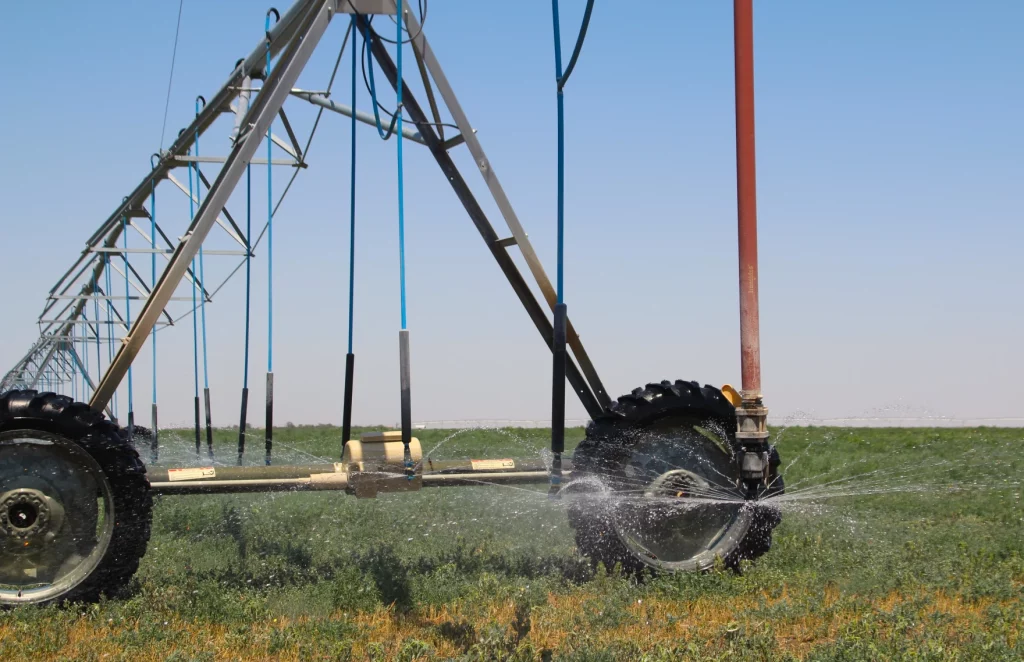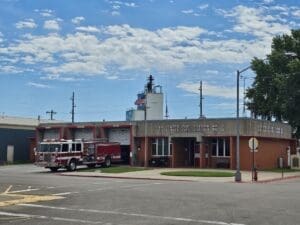Hays, KS— Trying to cut back on irrigation in western Kansas isn’t a new idea.
More than three decades ago, the state came to farmers in the Walnut Creek basin south of Hays with a mandate. Farmers had to drastically change how much water they used on their crops. Some had to cut irrigation by nearly half.
Roger Mohr, who has grown grain in that area since 1970, remembers the irrigation limits didn’t go over well — at least at first.
“None of us liked that when it happened,” Mohr said. “But we all realized that we had to make changes.”
A new study from Kansas State University shows how farmers in this part of west-central Kansas have made those changes to meet the state’s strict irrigation restrictions since they began in 1992.

- ‘This is do or die’: Western Kansas farmers push to save the Ogallala Aquifer before it’s too late
- Here’s how this year’s drought has battered the Midwest — and what it might mean for next year
- This city in Kansas really conserves its water, but that still might not be enough to survive
- How bad was the 2022 drought? For these 7 Kansas communities, it was the driest on record
- Kansas wheat farmers face a tougher future as climate change ramps up dry, hot, windy weather
- Up to 1 million birds count on Kansas wetlands during migration. Drought has left them high and dry
The research focuses on the Walnut Creek Intensive Groundwater Use Control Area, or IGUCA, which spans part of the creek’s basin in Ness, Rush and Barton counties.
Prior to the IGUCA’s restrictions, Mohr said, nearly all of the irrigation in his area came from inundating fields with long trenches of water that ran between the crop rows — a method that’s notorious for losing water to evaporation and runoff. Now, pretty much every piece of land that can field a more-efficient center pivot irrigation system has one.
The water limits spurred farmers to make other changes, too. They’ve switched up what they grow, Mohr said, from mostly irrigated corn — which requires a lot of water — to a rotation that includes other crops, such as soybeans and sorghum. Some of his neighbors have gone beyond center pivots and installed subsurface drip irrigation systems that conserve even more water.
Those changes have meant some big upfront expenses for farmers. But in Mohr’s view, it’s been worth it.
“We have to be very careful,” Mohr said, “because without water, none of us are going to be here.”

The state established the Walnut Creek IGUCA to leave more water for nearby streams that flow into Cheyenne Bottoms, a critical wetland bird habitat that the recent drought temporarily dried up. If aquifer levels decline enough, the water that historically flowed in a stream above it can get sucked underground and leave a dry bed on the surface.
As opposed to local enhanced management areas, or LEMAs, that allow local landowners to come up with their own plan for cutting irrigation, IGUCAs are initiated by the state. And farmers don’t have a say about how big the cuts are or whether they have to abide by the rules the state sets.
Here’s what that meant for farmers in the Walnut Creek area. Those who got their water rights after October of 1965 had to cut their irrigation the most — roughly twice as much as those with older water rights that were established between 1945 and 1965. Some farmers, like Mohr, had land that fell into both categories.

The junior water rights holders, which make up roughly half of the total allocations in the area, had to reduce their water use by 42%. Those with more senior rights only had to cut irrigation by around 20%.
Nathan Hendricks, a Kansas State University agricultural economics professor who worked on the study, said that 20% cut purposefully left senior rights farmers with as much water as the state determined was the bare minimum for growing irrigated corn in that area.
“The juniors just got whatever was left after that amount,” Hendricks said. “So it became much more restrictive.”
The remaining one-fifth of farmers had water rights that were established prior to the Kansas Water Appropriation Act of 1945 and didn’t have to reduce their irrigation at all — basically serving as a control group for the study.
And it turns out that if the farmers weren’t forced to cut their water use, they didn’t choose to do it on their own. The farmers whose irrigation got grandfathered in, Hendricks said, have hardly changed how much they water their crops over the past few decades.

Up to a certain point — around a 25% reduction in irrigation, Hendricks said — farmers can shrink their water use by just sprinkling fewer inches on a field. But once irrigation cuts exceed 25%, they pretty much have to stop watering some fields altogether, leaving the crops planted there to rely on the weather or choosing to not plant crops on those fields at all.
The K-State study reports that the reduction in irrigated acres around Walnut Creek significantly reduced the area’s land values. That’s because there’s a big difference between rental rates for irrigated and nonirrigated farmland.
In Barton County, for instance, an irrigated acre of land is worth more than twice as much as one without irrigation.
The study calculated all of the potential money forfeited due to those cheaper rents within this IGUCA and showed it adds up to a loss of $283,000 per year for the region.
For the farmers who had to stop irrigating some of their fields entirely, Hendricks said, it’s likely they also took a personal financial hit to their harvests and profits.
“If you’re backing off irrigated acres,” Hendricks said, “it’s hard to imagine there’s not a loss.”

Other research from part of northwest Kansas has shown that some farmers who cut irrigation end up seeing their profits go up as they spend less money pumping water from underground and buying seed and fertilizer. But the conditions farmers face — the local climate, the depth and quality of their section of aquifer — can vary greatly from one part of the state to another.
And with the ongoing extreme drought, there’s only so much farmers can do to make up for a lack of rain even if they have irrigation.
Parts of Ness County near the western edge of the Walnut Creek IGUCA experienced their driest year on record in 2022. And many farmers in west-central Kansas already saw drought burn up their wheat and corn crops last year, drastically reducing harvests.
Without some precipitation in the next 60 days, Mohr said, farmers in his area will have to start making tough choices about the coming season.
“Mother Nature’s water,” Mohr said, “is much better than irrigating water.”
David Condos covers western Kansas for High Plains Public Radio and the Kansas News Service. You can follow him on Twitter @davidcondos.
The Kansas News Service is a collaboration of KCUR, Kansas Public Radio, KMUW and High Plains Public Radio focused on health, the social determinants of health and their connection to public policy.
Kansas News Service stories and photos may be republished by news media at no cost with proper attribution and a link to ksnewsservice.org.













